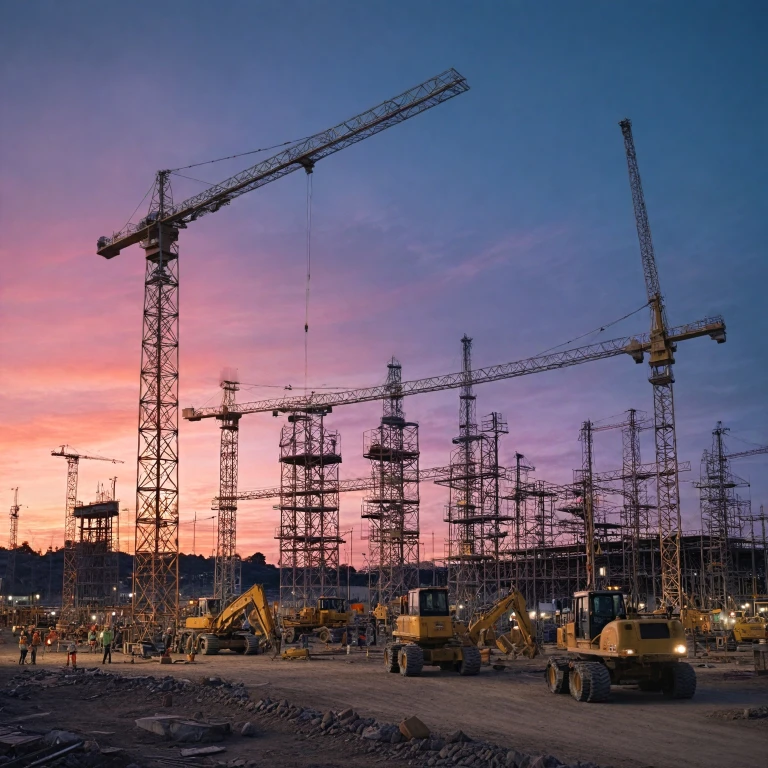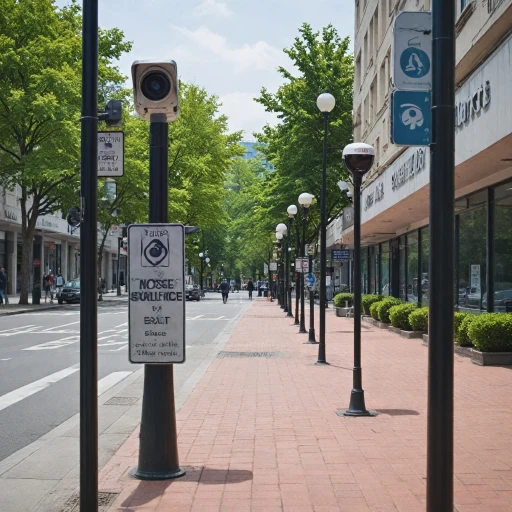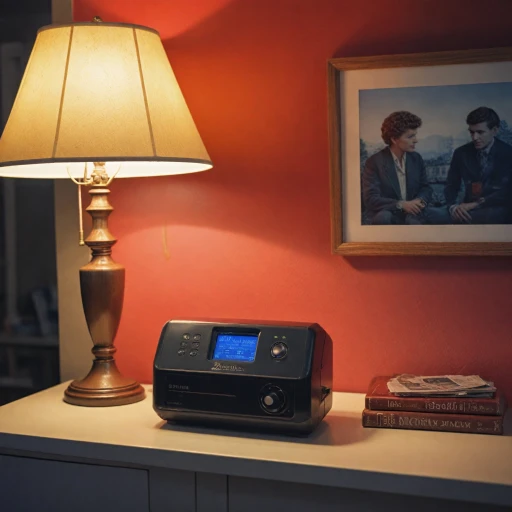
Understanding the Importance of Security on Construction Sites
The Critical Role of Security on Construction Sites
Ensuring the security of construction sites is paramount for a variety of reasons. These dynamic environments face unique challenges when it comes to maintaining safety and preventing theft. With numerous personnel and expensive machinery on site, the implementation of a robust security system, such as surveillance cameras, becomes indispensable. Construction projects are often targets for theft and vandalism due to the presence of valuable equipment and materials. Surveillance cameras act as a deterrent to potential thieves and can significantly reduce crime rates on job sites. By having real-time monitoring, managers can quickly identify suspicious activity and take immediate action, thereby saving both time and resources. Moreover, the use of security cameras on construction sites assists in ensuring safety compliance. By keeping a close eye on activities via video footage, it is possible to monitor adherence to safety protocols, thus reducing the risk of accidents and ensuring a safer working environment for all personnel involved. Investing in a comprehensive security system tailored to a construction environment not only protects assets but also enhances project efficiency. With the modern surveillance systems available today, incorporating solar-powered cameras allows for continuous operation even in remote locations. Such systems ensure continuous monitoring without the need for constant power sources, making them highly suitable for construction sites. In conclusion, the role of security on construction sites cannot be overstated. By integrating surveillance systems tailored for these environments, site managers can protect their assets, ensure safety and increase the overall efficiency of their operations. For more insights into maintaining security, check out this guide on enhancing home security with dusk to dawn sensors.Types of Security Cameras Suitable for Construction Sites
Exploring Suitable Camera Options for Construction Sites
Construction sites require robust security solutions due to their nature as large, open areas with valuable equipment and materials. Selecting the appropriate security cameras is crucial for ensuring comprehensive site security. With various types available, it's essential to understand which options best suit the dynamic needs of a job site. Bullet points for clarity:- Surveillance Cameras: These camera systems provide continuous monitoring and are ideal for large construction sites where constant vigilance is necessary. They can be integrated into existing surveillance systems to enhance site security.
- Solar-Powered Cameras: Given the often remote or power-scarce locations of job sites, solar-powered cameras offer an environmentally friendly and reliable option. They eliminate the need for extensive wiring and can operate independently, ensuring uninterrupted monitoring.
- Mobile Surveillance Systems: These offer flexibility and can be moved around a construction site as needed. They provide real-time video feeds, which are invaluable for site managers to keep an eye on various areas without being physically present at all times.
- Time Lapse Cameras: These are particularly useful for documenting the progress of construction projects. While they are not primarily designed for security, they can assist in monitoring worker safety and identifying issues such as theft or unauthorized entry.
Key Features to Look for in Construction Site Cameras
Must-Have Features for Construction Site Cameras
When considering the best surveillance systems for a job site, certain features are indispensable to ensuring security and preventing potential theft. Here we delve into key attributes that provide reliable monitoring and safety for construction projects.- Durability and Weather Resistance: The harsh outdoor conditions on construction sites necessitate robust camera systems. Cameras must withstand rain, dust, and varying temperatures to provide uninterrupted video recording.
- High-Resolution Video: To ensure threats are identified clearly, security cameras should offer high-resolution video. This high-definition clarity is particularly useful for reviewing incidents or creating time lapse videos to monitor project progress.
- Night Vision Capability: Construction sites have extended hours, often requiring surveillance even after daylight. Cameras with night vision or low-light enhancements significantly improve jobsite security.
- Wireless and Solar Powered Options: The mobility of construction projects makes it beneficial to use wireless cameras. Incorporating solar powered cameras provides flexibility in placement and reduces reliance on wired electric sources.
- Real-Time Monitoring and Alerts: A reliable construction security system allows for real-time monitoring and instant alerts, enhancing response times to incidents such as unauthorized entries or suspicious activities.
- Integration with Other Systems: Effective security solutions integrate well with other systems, whether that’s mobile surveillance, motion detection, or access control, offering a comprehensive approach to site security.
- Storage Capabilities: Ample storage options are essential for managing large volumes of video data, from short-term event monitoring to long-term archiving for project documentation.
Placement Strategies for Optimal Coverage
Strategic Camera Positioning for Maximum Site Security
When it comes to safeguarding a construction site, careful thought must be given to the placement of security cameras. Properly positioned cameras can enhance the effectiveness of the surveillance system by providing real-time monitoring of the job site and deterring unwanted activities. Here’s how to set up your cameras for optimal coverage:- Perimeter Surveillance: Start by mounting cameras around the outer boundaries of the construction site. This strategy ensures any unauthorized access attempts can be caught early. Implementing mobile surveillance systems, which are flexible and easy to move, can cover critical perimeter points extensively.
- Entrance and Exit Points: Deploy cameras at all major entrances and exits of the jobsite. This enables monitoring of personnel and vehicles coming in and out of the site, an effective deterrent against theft.
- High-Value Areas: Areas with expensive equipment or materials such as CLS fill should have dedicated cameras for close monitoring. These areas are prime targets for theft, making them crucial for focused surveillance.
- Blind Spots Consideration: Identify and eliminate blind spots where surveillance cameras might leave gaps. The usage of wide-angle lenses or additional cameras can fill these gaps, ensuring comprehensive coverage.
- Elevated Positions: Positioning cameras at elevated points not only offers a broad view of the construction site but also reduces the risk of vandalism. Pole-mounted or solar-powered cameras are an excellent choice for such placements.
- Integration with Other Systems: For improved project safety, integrate your site cameras with other security measures. This can include alarm systems that provide alerts upon detecting unauthorized movements, enhancing the site security network.
Integrating Security Cameras with Other Security Measures
Synergizing Surveillance Cameras with Comprehensive Security Protocols
Integrating security cameras with existing security measures is pivotal for creating a robust surveillance system on construction sites. By doing so, you can achieve real-time monitoring and ensure the safety of your jobsite.Effective integration involves combining camera systems with both physical and digital security efforts. For instance, linking surveillance cameras with motion detectors enhances real-time alerts, discouraging unauthorized access and reducing the risk of theft. Additionally, utilizing mobile surveillance systems allows for flexible monitoring across various project sites, filling coverage gaps that static cameras might miss.
Furthermore, employing surveillance systems equipped with a time lapse feature can provide a comprehensive overview of project progression and workforce activity. This not only aids in jobsite security but also serves as a valuable tool for project management and safety audits.
Beyond technology, establishing a clear protocol for personnel responsible for monitoring the surveillance feed ensures rapid response to any breaches or incidents. Sharing real-time video footage with onsite security personnel or remote teams can streamline decision-making and resource deployment in case of emergencies.
Finally, considering solar-powered security cameras can enhance the sustainability of your security efforts while ensuring continuous monitoring, even in remote areas where power supply could be inconsistent. Integrating such environmentally friendly measures can bolster site security without compromising on operational efficiency at construction sites.













